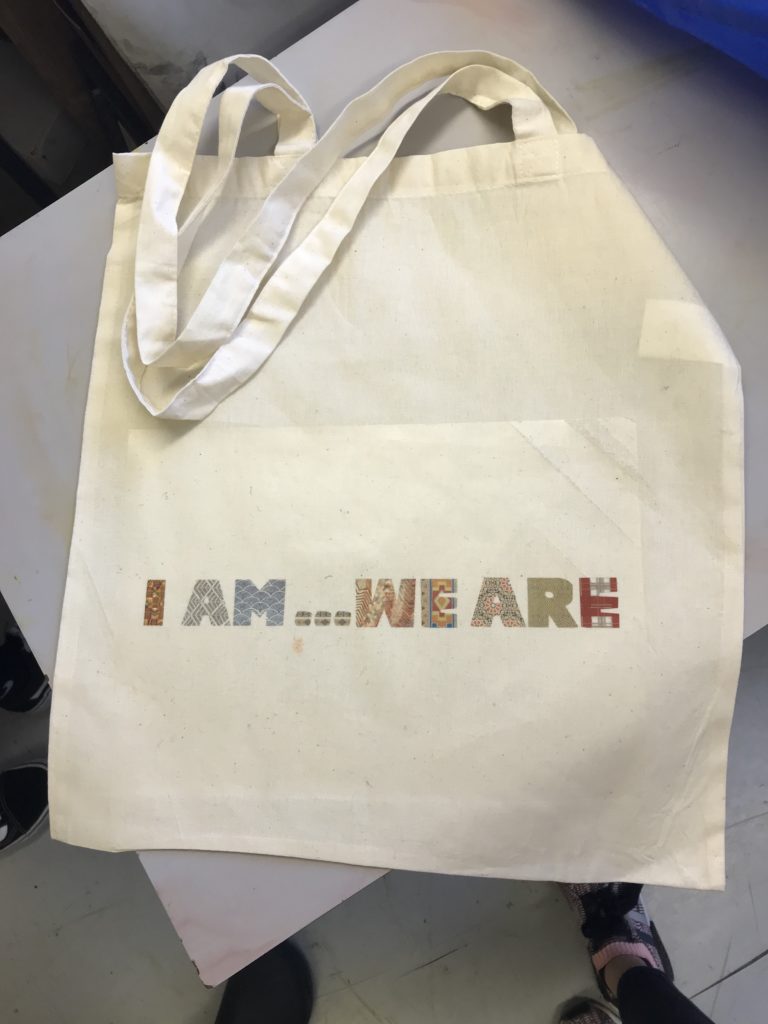Background
Alongside my I am, We are Different by Design group members, in March of this year (2019) we held a workshop at the Tate Exchange in London. We led a creative workshop with members of the public during the schools Reading Assembly. The theme of the Reading Assembly event/workshop day was movement. We set out to creative a fun and interactive activity for people of all walks of life to do collaboratively and/or independently. This experience has led us to develop our organisation skills as well as event planning and execution which isn’t necessarily a ‘designers’ job.
Brief
Our brief was to establish, create and execute an activity to be done with the public at the Tate Exchange representing the university, and primarily the course of typography. It was an open brief to come up with any type of activity trusting it could be done by children as well as adults, could be done within the given space and involved typography and movement in some way. The downside of having such open briefs is that it can be quite overwhelming to make decisions and come up with ideas because the list of options appears non exhaustive.
Research
In order to come up with a concept for the activity we looked online to see what kinds of activities were plausible. This was necessary due to the fact that we had to create and conceptualise an idea ourselves. But also it allowed for us to test out different activities to determine which served as most effective and more importantly fun!

Communication
Again throughout this project, we all communicated through Trello, Facebook and with weekly group meetings that always took place on a Wednesday similarly to the way in which we did so for other projects we worked on together. These sessions usually lasted between 1-2 hours, so we often discussed more than one thing we were working on collaboratively.
Process
After researching what activities were possibly suitable, we tested them out on each other. Eventually, after discussing many different options (see figure 1 and 2) we decided to initiate an activity that involved participants creating their own flags.
As the theme was movement, we connected that to the idea of migration and immigration. With this, we also attached the idea of citizenship and nationality. Not in a way that made people explore patriotism, but more so to give them the power to create their own flag that represented their identities as opposed to where they were from (unless this was what they wanted – there were no rules).

The participants would be able to create their ‘flags’ by cutting out (or using pre-existing) pieces of paper to paste onto an A4 sheet. This A4 sheet that contained their flag was to then be printed onto tote bags for them to take home with them. The fact that participants were able to take this keep sake home was alone successful as tote bags are commonly favoured as collateral. In order to get the bag printed, the ‘flag’ was scanned in and flipped on laptops provided by the Tate. Once scanned and flipped, the prints were printed onto transfer paper that was to then be heat pressed onto the tote bags. When we practiced this at the university everything went seamlessly, however on the day, after confusion surrounding the use of a heat press on the premises, we had to use hand held irons instead of the heat press (which made it quicker and easier to process tote bags). This did not set us back too far however, as it allowed for us to interact with people more whilst they waited for their bags to get printed.

Feedback
Feedback we received from the public was very positive as we asked many of them what they thought of the activity and if they enjoyed it. It was also clear to see the satisfaction on their faces once seeing their designs printed on bags they could use. This made me realise that that was how we had the privilege of feeling way more often whilst being on the course, that the everyday person does not.
Additionally, the Reading Assembly organisers and course leaders from different courses within the school had positive words for us as the organisation and planning led to positive execution.
Conclusion
In conclusion, this experience was completely different from what we’re normally used to on the course. We did not design a product or piece of work, but more so designed and curated an experience for the general public. Being able to produce work and an activity for an institution such as the Tate was a great experience as well and probably something not everyone gets to do.

